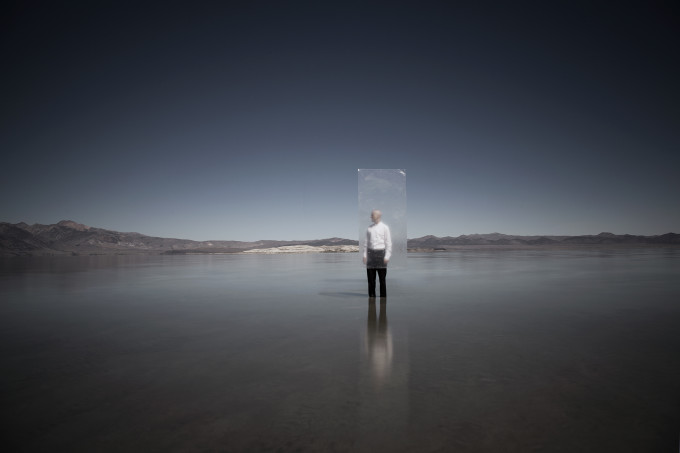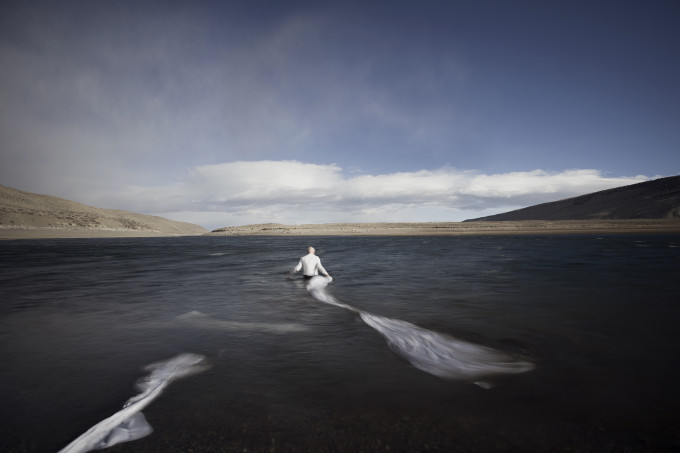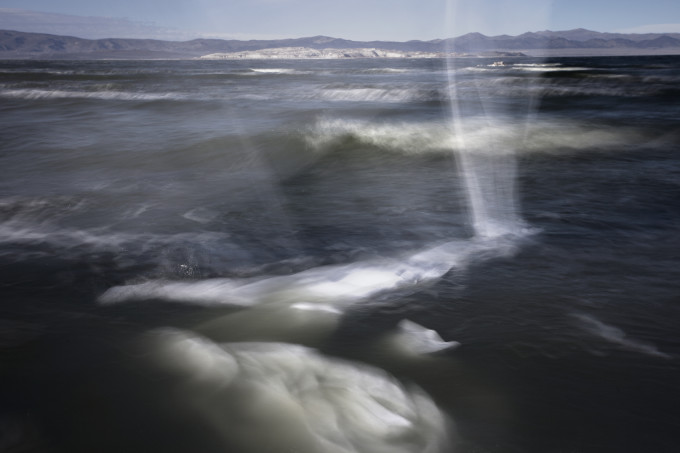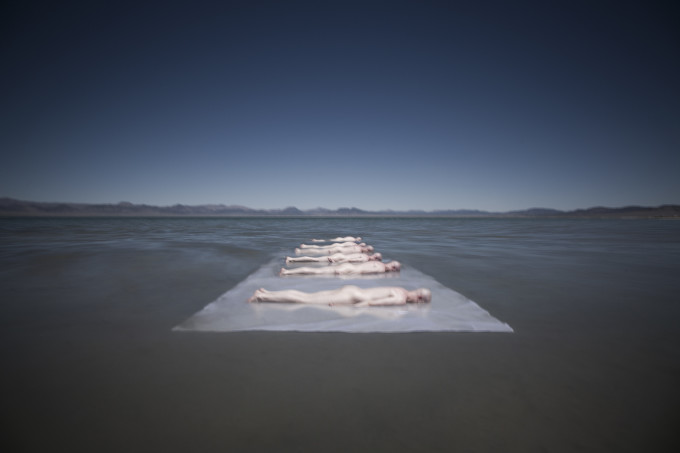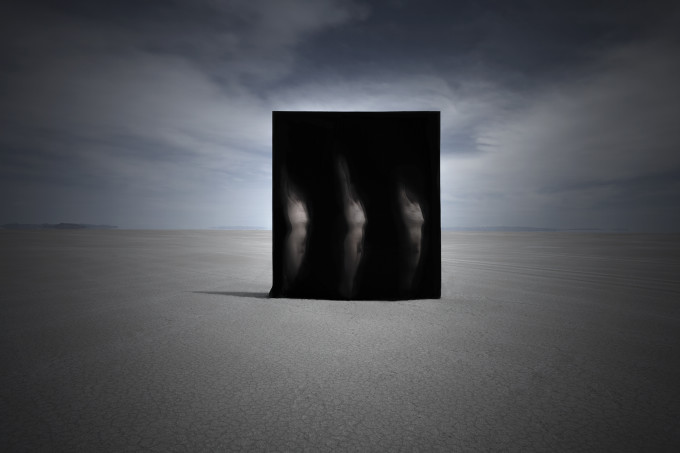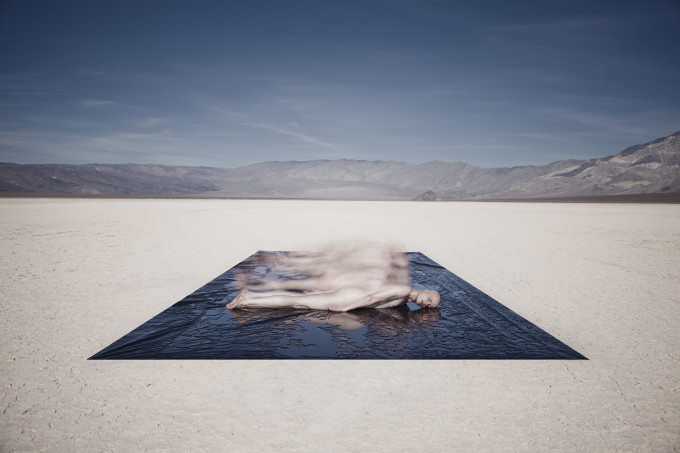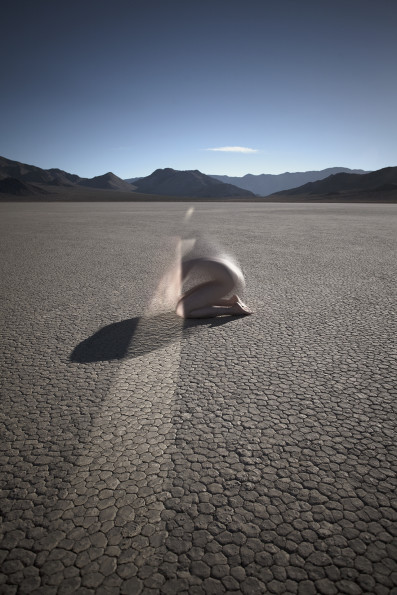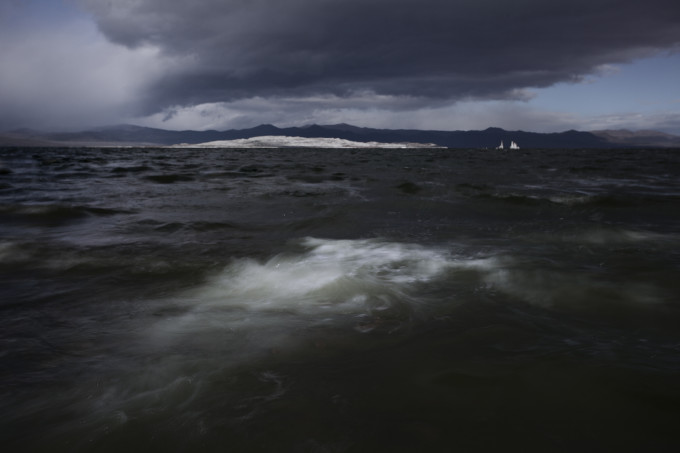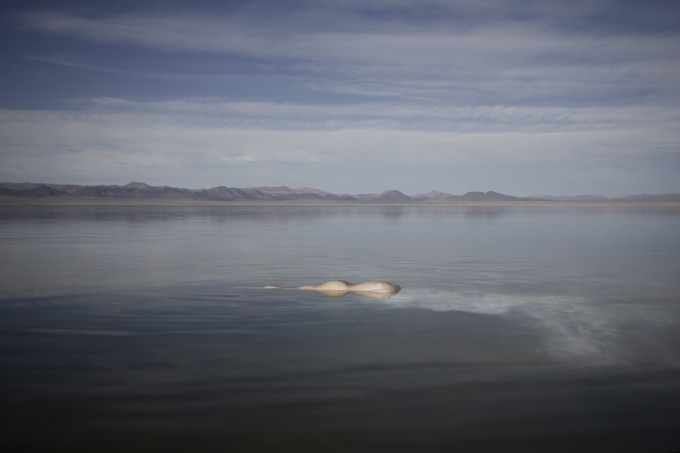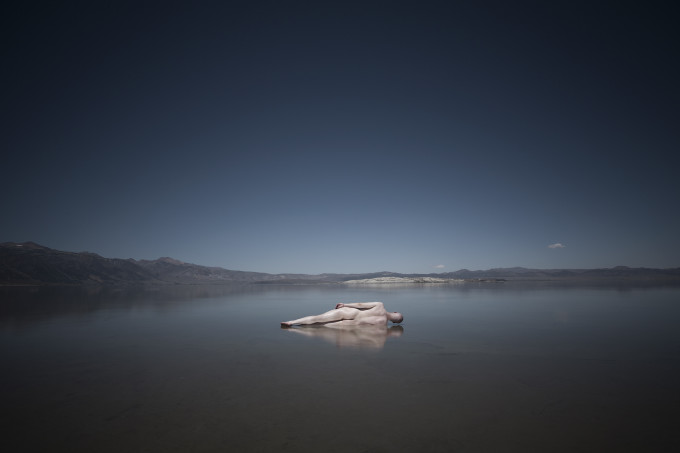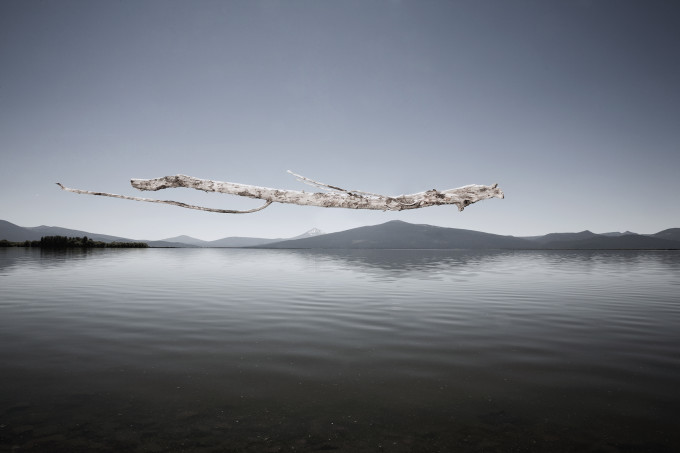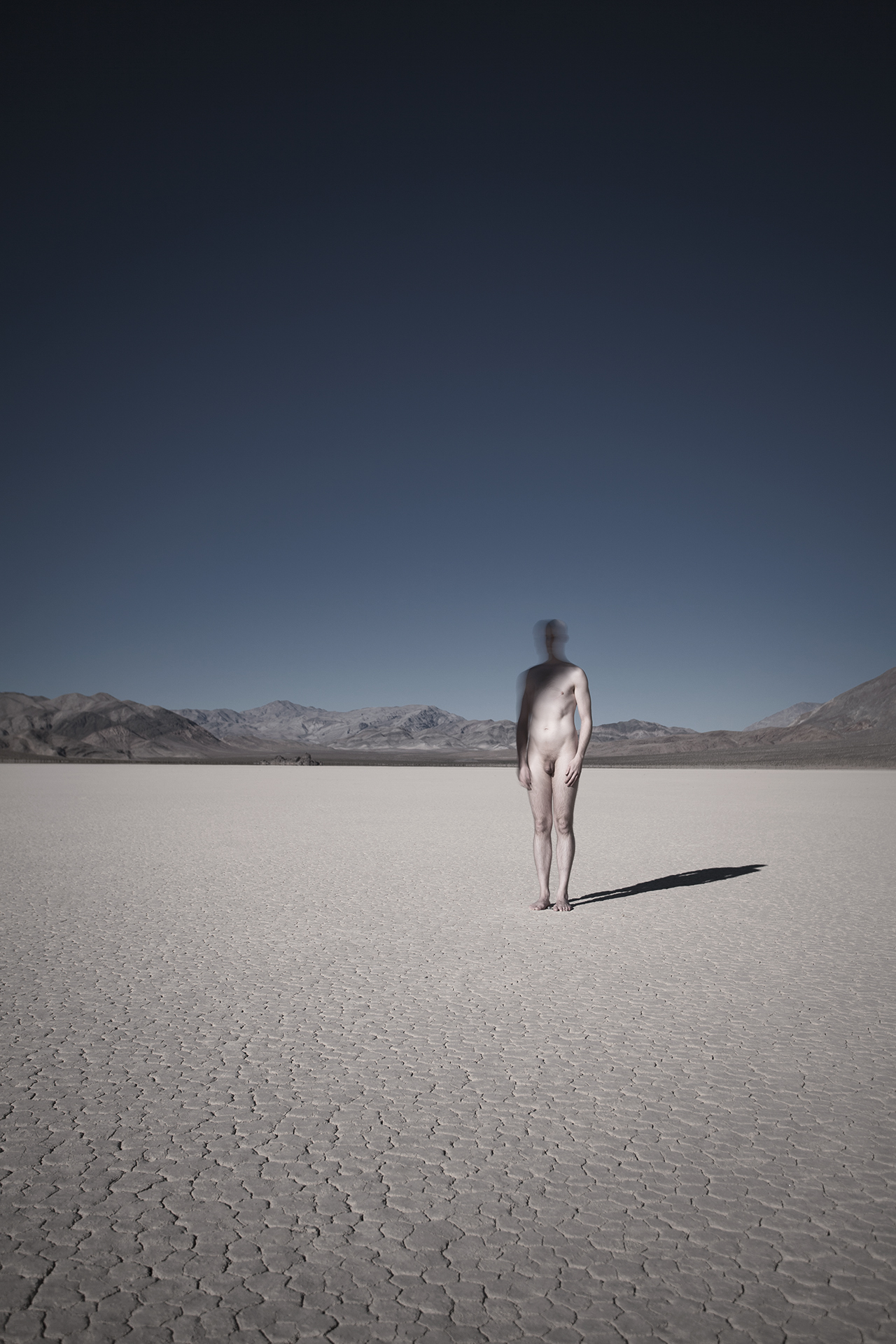Last Updated on 09/08/2017 by Chris Gampat
All images by Ville Kansanen. Used with permission.
Photographer Ville Kansanen was born in Espoo, Finland in 1984 and studied photography in the Glasgow School of Art before moving to Los Angeles to pursue a career as an artist in 2008. When the digital photography world came about, the creative vision for Ville simply fell into place. His career has taken him to California, where he’s showcased his work here the US and has built a career in graphic design. Part of this could explain his project “Procession of Spectres.”
It’s a common misconception that the project is about depression; and for Ville it’s more about an emergence of self. Depression, however, was a catalyst for the series–as was trying to put emotions into images.
The series combines surrealism, personal elements, landscapes and portraiture to turn it into a true fine art photography piece.
Phoblographer: Talk to us about how you got into photography.
Ville: I wanted to be a painter, but painting is incredibly difficult and slow; I wanted to achieve detail-rich compositions as quickly as my mind could come up with ideas. I didn’t have the attention span for it even though I had decent drawing skills. Also, besides plain air, you are stuck in a studio, and I found that very limiting. I enjoy finding locations and being out in the world. I grew up around computers because my older brother was an enthusiast. We had Commodores, Amigas, and PC’s while all my friends had Nintendos. I would play around with graphics software all the time, so when digital photography became accessible everything fell into place.
All of a sudden photography was something in the digital realm, it felt new and limitless. That shaped my personal philosophy about photography that it is an apparatus to capture visual objects in space, which are to be arranged by the artist to convey emotions and ideas, and less about capturing definitive moments or making observations.
Phoblographer: Procession of Spectres is a very interesting series that chronicles your battle with depression and rebuilding a life from it. So why choose photography as an outlet and medium to help you?
Ville: This is a common misconception about the series. While my struggle with depression acted as a catalyst and a sort of vehicle to clarify the activity in my mind; this work is not about being depressed or coming out of depression; it is about the emergence of self, consciousness, and our agency as evolving and unfinished beings in nature. The emotional experience of coming out of depression served as a conduit to make observations about how I think our bodies, minds, emotions, and spirit create our experiences. I think it is very attractive and dangerous to pretend there’s a magic bullet that cures depression, stress, or anxiety; it doesn’t exist, and my work didn’t “cure” anything, or even really resolve anything.
The work did help me become more comfortable with who I am though and it gave me a place to go when I felt I had nowhere or no one to turn to. I think all artists feel this way about their work, like it’s their most steadfast friend.
Phoblographer: A lot of this is really about feeling and translating emotions into images. So on looking back at the series, what have you felt has dictated the creative vision of the project so far and where do you want it to go?
Ville: I think the core of the work is trusting that the unknown parts of my mind can communicate deeper truths than the social, psychological, and cultural resistance filter that affects my experience of consciousness and how I generate ideas. I prefer to be in the same camp as surrealists like Leonora Carrington, who emphasized that artists inhabit a visual world that can’t be explained in any other terms.
To your point, though, I try to communicate feelings above all else and try not to over-intellectualize emotional experiences. Only the framework in which they reside can be intellectualized and even that is often quite silly. The work is dictated by focusing on feelings and not photographs. I don’t presume to want the work to go anywhere. It does what it wants. I just try not to interfere with the process and pray I can observe what the thin red line of it is, so that I can create cohesion and structure.
Phoblographer: Your imagery is highly specific in its use of colors and a sense of almost de-saturation. How do you feel this helps you tell the sort that you’re trying to convey?
Ville: I love things that reside in between choices and directions. I choose to be somewhere between black and white and color. I also love diffusion of light. Even in the desert during mid-day, on a cloudless day there’s often a layer of dust that fills and filters the light. It creates this beautiful screen in the horizon and blends it with the sky in wonderful ways.
The combination of diffusion and desaturation lend to a type of softness and translucent quality that I very much love. I think my color choices are also dictated by trying to imitate how cold air changes the light. That to me is the light of Finland, my home country. I am probably romanticizing it a bit, but I don’t care.
Phoblographer: Do you ever sit there and storyboard scenes and think to yourself that you are going to make goals to get to certain scenes eventually?
Ville: Absolutely. I have fairly clear ideas of what I want to achieve a long time before I photograph. In a sense, the majority of my images are series of images, due to how they are composed, orchestrated and assembled. There is a choreography and structure involved in my photographic process, which sometimes requires very meticulous planning and practice.
All this planning is important, but the key to good work is to leave space for adaptation, play, and accidents. That is where the gifts are if you keep your heart open. I am sometimes awful at that part because I like to be in control. Control is overrated.
Phoblographer: How do you go about specifically choosing the images from a shoot to show to the world? What’s the mental process like?
Ville: For me, the difficult part is to get over the aesthetics and ask yourself: does it work? Making a beautiful image is great but pointless in and of itself. I also have a lot of personal problems to overcome because I use my body. I have to set aside apprehensions about showing parts of myself in uncomfortable ways and attempt to be objective about how I am expressing myself. However, all that said, there has to be a degree of technical rigor. I believe in robust work where a high level of technical craft is married with proficient conceptual thinking.
So, if an image is technically weak, it gets cut automatically. I also have a few close comrades, whom I send images to for feedback. They are invaluable in the editing process because I am much too close to my work. I especially value the importance of brutally honest feedback as I want to feel an uncomfortable space for improvement and growth.



